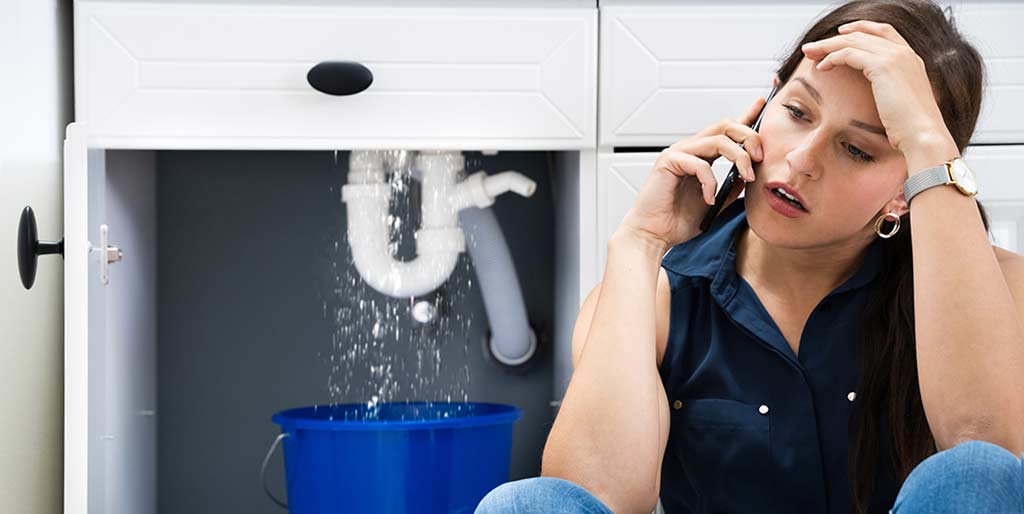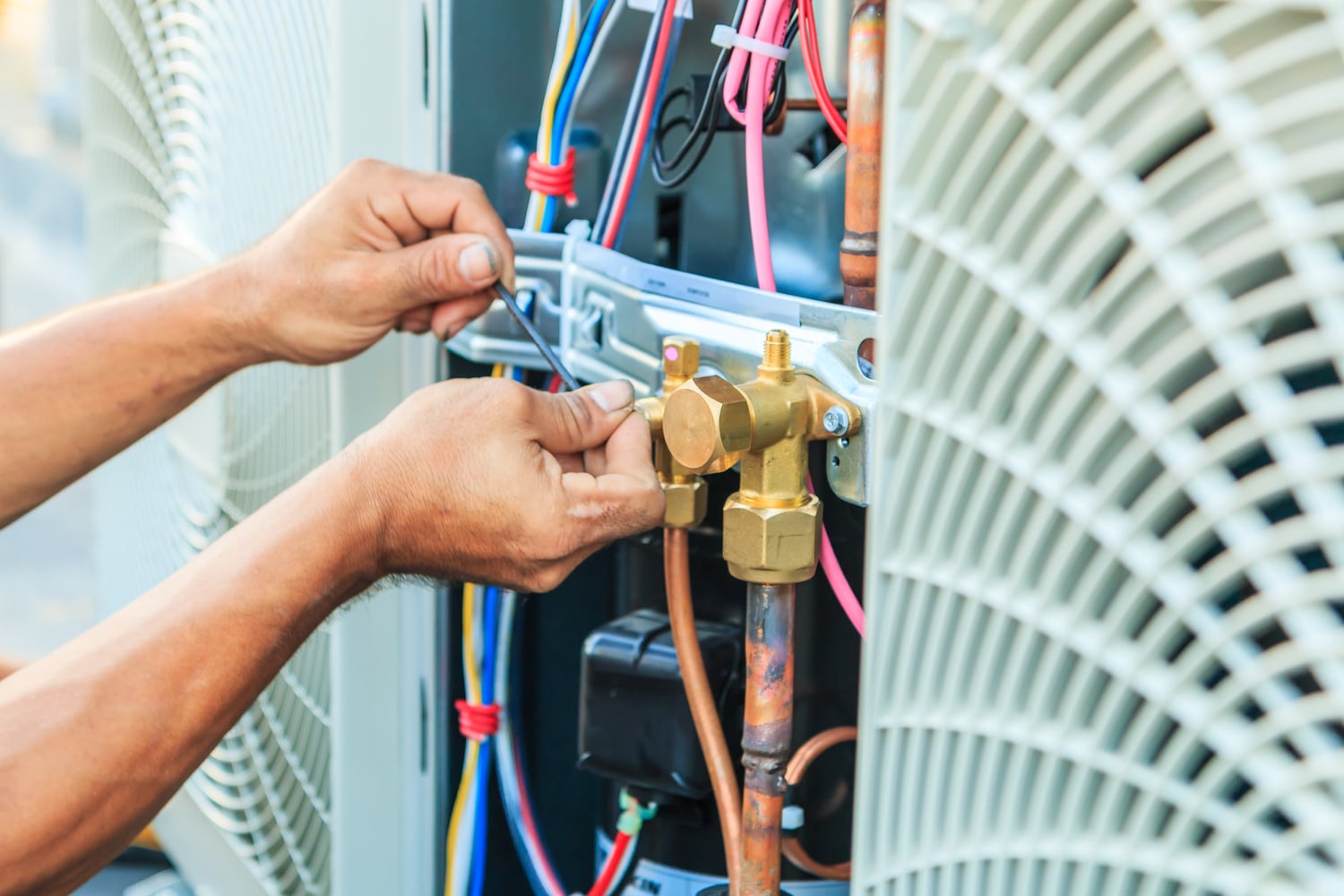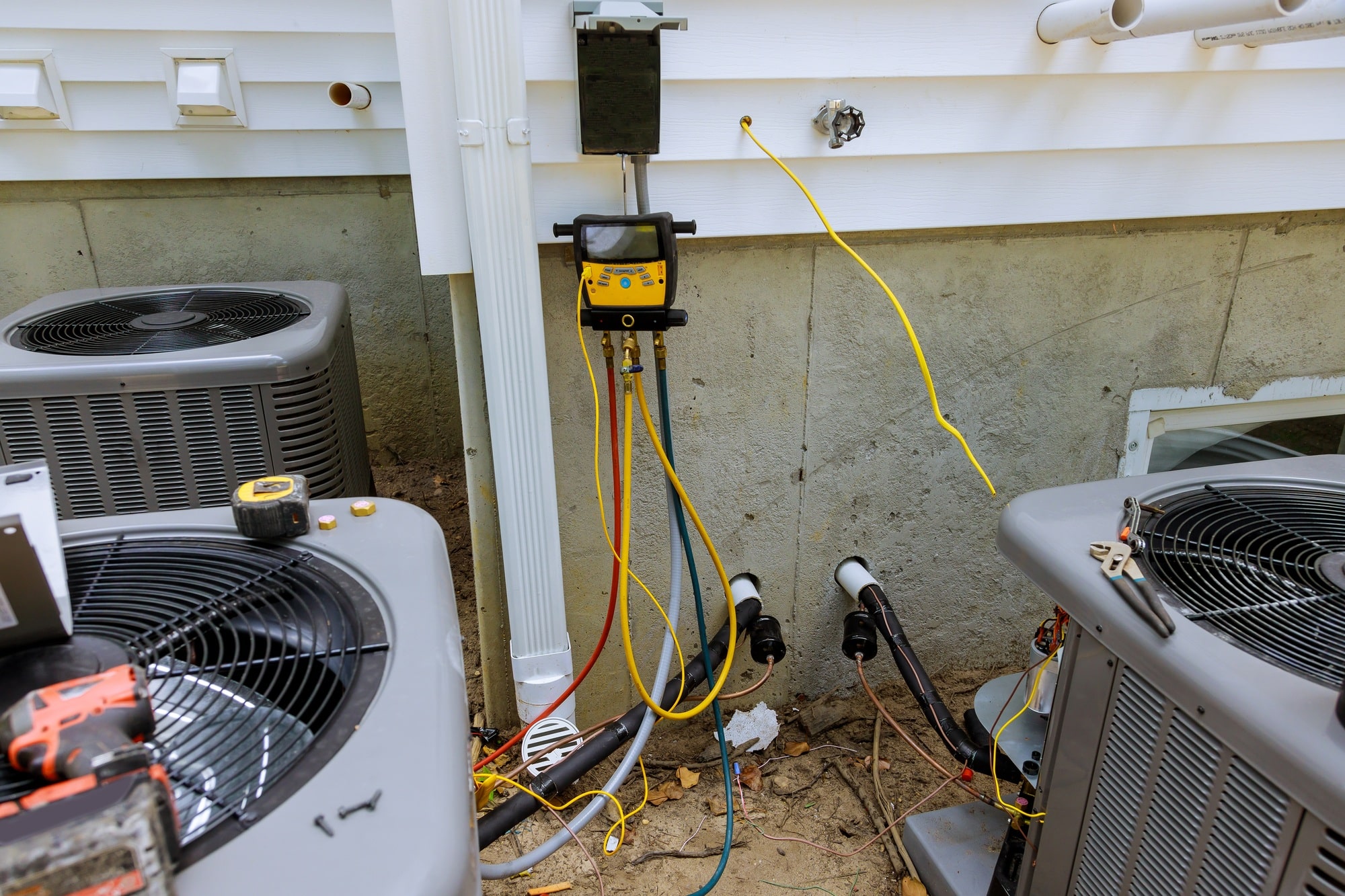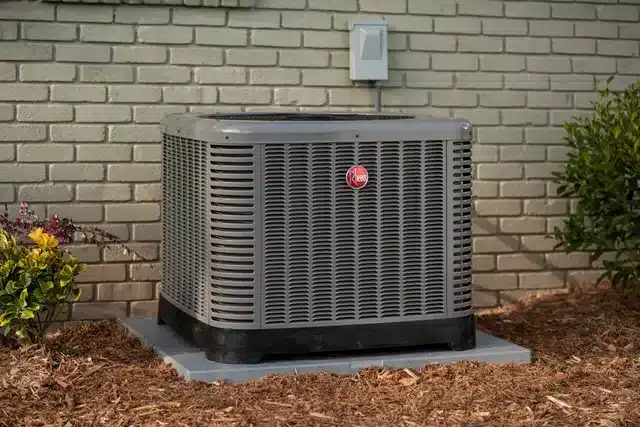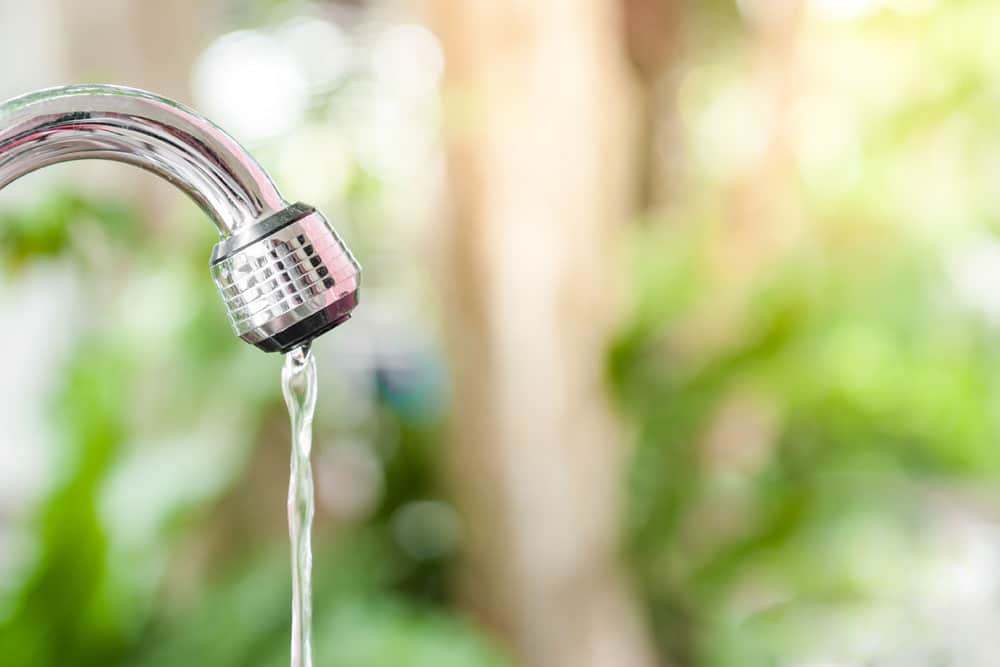Key Takeaways
- Knowing the location of your main water shutoff valve is crucial for every Salt Lake Valley homeowner
- Different plumbing fixtures have individual shutoff valves for targeted water control
- Water damage can escalate quickly in Utah homes, costing thousands in repairs
- Basic tools like adjustable wrenches and water-resistant tape can help manage small leaks temporarily
- Green Line Plumbing, Heating and Air provides 24/7 emergency plumbing services throughout the Salt Lake Valley area
Water emergencies wait for no one. Whether it’s 2 PM on a Tuesday or 2 AM on a holiday weekend, plumbing disasters can strike any Salt Lake Valley home without warning. A burst pipe can release up to 100 gallons of water in just 8 minutes, causing extensive damage to your Holladay or Cottonwood Heights property before emergency services even arrive. For perspective, the average household in Utah uses about 50 gallons per person daily—meaning a single broken pipe can release more water in minutes than your family uses in an entire day.
At Green Line Plumbing, Heating and Air, we’ve seen firsthand how quickly water damage can escalate in Salt Lake City homes. From flooded basements in Sugar House to burst pipes in Millcreek during winter freezes, we understand the urgency these situations demand. While our emergency response team is always ready to assist Salt Lake Valley residents, knowing how to shut off your water until help arrives can be the difference between a minor inconvenience and a major renovation.
This comprehensive guide will walk Utah homeowners through the essential steps of locating and operating various water shutoff valves in their homes, providing temporary solutions for common emergencies, and preparing for potential plumbing disasters before they occur. Consider this your emergency plumbing playbook for protecting your Sandy, West Valley City, or Draper home when every second counts.
Understanding Your Home’s Water System
Before we dive into emergency procedures, it’s helpful to understand how water flows through your Salt Lake Valley home. Most Utah residential plumbing systems follow a similar pattern:
- Water Main Connection: Your home connects to the municipal water supply via a service line, typically entering from the street side of your property.
- Main Shutoff Valve: This critical valve controls all water flow into your home and is your first line of defense in a major emergency.
- Distribution Pipes: From the main valve, a network of pipes carries water throughout your home.
- Fixture Shutoff Valves: Individual fixtures like toilets, sinks, and appliances usually have dedicated shutoff valves for isolated control.
- Drainage System: Separate from your supply lines, this system carries wastewater away from your home to the Salt Lake City sewer system or your private septic tank.
Understanding this flow helps you target your response in an emergency. If a bathroom sink is overflowing in your Murray home, you might only need to close that fixture’s individual valve rather than shutting off water to your entire house.
Locating Your Main Water Shutoff Valve
The main water shutoff valve is the most important plumbing feature to locate before an emergency occurs. In Salt Lake Valley homes, this valve is typically found in one of several locations:
Common Locations in Utah Homes
- Near the Water Meter: For many Salt Lake City and surrounding area homes, especially newer constructions in areas like Daybreak or Herriman, the main shutoff valve is located near where the water line enters your home, often adjacent to the water meter.
- Basement or Crawlspace: In older homes throughout Millcreek, Sugar House, and the Avenues neighborhoods, the main valve is frequently found in the basement or crawlspace on the wall facing the street.
- Utility Room: Some South Jordan and Riverton homes have the main valve in a utility room alongside the water heater or furnace.
- Exterior Wall: In areas with milder winters, the valve might be outside on an exterior wall, though this is less common in Salt Lake Valley due to freezing temperatures.
- Garage: Homes in Sandy or Draper sometimes have the main valve mounted on a wall inside the garage.
Identifying Your Main Shutoff Valve
Main water shutoff valves in Utah homes typically come in two styles:
- Gate Valve: Resembling a wheel with spokes, this older style requires several full rotations to completely shut off. Turn clockwise (right) to close—remember “righty-tighty.”
- Ball Valve: Featuring a straight handle that aligns with the pipe when open, this newer style requires only a quarter-turn to close. When the handle is perpendicular to the pipe, the water is off.
Pro Tip: Once you’ve located your main shutoff valve, tag it with a brightly colored label or tie a visible ribbon around it. In a high-stress emergency, this visual cue can save precious minutes.
Testing Your Main Valve
We recommend Salt Lake homeowners test their main shutoff valve at least twice yearly:
- Inform all household members you’ll be testing the water shutoff
- Turn the valve to the closed position
- Open a faucet at the lowest point in your home (often a basement sink or outside spigot)
- Open another faucet at the highest point (typically a second-floor bathroom)
- If water stops flowing from both taps, your valve is working properly
- Return the valve to the open position
If the valve is difficult to turn or continues to allow water flow when closed, contact Green Line Plumbing, Heating and Air for immediate service. A malfunctioning main shutoff valve can leave your Utah home vulnerable in emergencies.
Understanding Fixture-Specific Shutoff Valves
While the main shutoff valve controls water to your entire Salt Lake home, individual fixture shutoff valves allow for targeted water control. Here’s where to find them:
Toilet Shutoff Valves
Look for a small oval or round handle connected to a flexible water supply line near the floor behind your toilet. Turn clockwise to shut off water to just the toilet—essential knowledge when dealing with an overflowing bowl in your Taylorsville or West Valley City home.
Sink Shutoff Valves
Check beneath the sink cabinet for two shutoff valves (for both hot and cold water). These are particularly important in kitchens, where appliance failures in Holladay or Cottonwood Heights homes can cause significant water damage to cabinetry.
Washing Machine Valves
Located directly behind your washing machine, these valves (typically one hot, one cold) should be closed when you’re away from your Salt Lake home for extended periods, as washing machine failures are among the most common sources of serious household flooding.
Water Heater Valves
Your water heater should have a dedicated shutoff valve on the cold water inlet pipe. In case of a water heater leak in your Murray or Millcreek home, shutting off this valve can prevent further damage while still allowing cold water usage throughout the house.
Outdoor Spigot Valves
Many Salt Lake Valley homes have interior shutoff valves for outdoor water spigots, usually located near where the water line exits to the outside. These should be closed before winter to prevent freezing and pipe bursts, a common emergency call we receive from Sandy and Draper homeowners during Utah’s first cold snap.
Common Plumbing Emergencies and Immediate Responses
Now that you know where your shutoff valves are located, let’s address specific emergencies common in Salt Lake Valley homes:
Burst Pipes
Burst pipes are particularly common in Utah during winter months when temperatures drop below freezing. When a pipe bursts:
- Shut off the main water valve immediately
- Open all cold water faucets to drain the system
- Take photos for insurance purposes
- Contact Green Line Plumbing, Heating and Air for emergency service
The average cost of water damage from a burst pipe in a Salt Lake City home ranges from $1,000 to $4,000, making rapid response critical.
Overflowing Toilet
When your toilet begins to overflow:
- Remove the tank lid
- Push the flapper valve down to stop water flow from the tank
- Turn off the toilet’s shutoff valve
- Use a plunger to clear the blockage once the water level has decreased
- Call our Salt Lake City plumbing team if plunging doesn’t resolve the issue
Leaking Water Heater
Water heaters typically last 8-12 years, though hard water conditions in many Salt Lake Valley areas can shorten their lifespan. If you notice water pooling around your heater:
- Check if it’s condensation or an actual leak
- For a confirmed leak, turn off the water heater’s shutoff valve
- For gas water heaters, turn the gas valve to the “off” position
- For electric water heaters, turn off the dedicated circuit breaker
- Contact our West Valley City or Sandy specialists for same-day water heater service
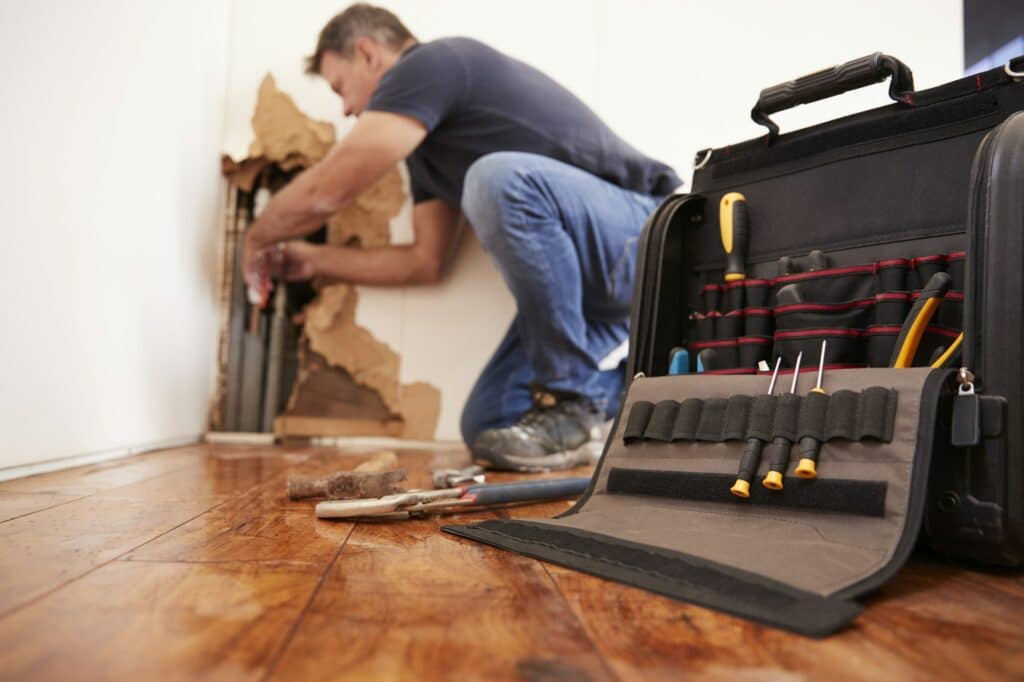
Frozen Pipes
Utah’s winter temperatures regularly drop below freezing, putting pipes at risk. If you turn on a faucet and only get a trickle:
- Keep the faucet open
- Apply heat to the suspected frozen section using towels soaked in hot water, a hairdryer, or a space heater (never use open flame devices)
- Continue applying heat until full water pressure is restored
- If you cannot locate or thaw the frozen section, call our Holladay or Millcreek emergency plumbers
Leaking Fixtures
For leaking faucets, showerheads, or visible pipe joints:
- Shut off the water to the specific fixture
- Place a bucket or towels to collect water
- For minor leaks, apply plumber’s tape as a temporary measure
- For persistent leaks, contact our Salt Lake County plumbing team
Temporary Solutions Until Professional Help Arrives
After shutting off the water, these temporary measures can help minimize damage while awaiting our Green Line Plumbing, Heating and Air technicians:
Essential Tools for Emergency Plumbing Response
Every Salt Lake Valley home should have these basic tools accessible:
- Adjustable wrench for turning shutoff valves
- Bucket for catching drips and overflow
- Plumber’s tape for temporary leak sealing
- Towels and mops for water cleanup
- Battery-powered flashlight (water and electricity don’t mix!)
DIY Temporary Fixes
While waiting for professional help in your Taylorsville or Draper home, you might:
For Pipe Leaks:
- Turn off water to the affected area
- Dry the pipe thoroughly
- Apply plumber’s epoxy putty to small cracks
- Wrap with rubber or silicone repair tape, pulling tightly and overlapping layers
- Secure with hose clamps for added pressure
For Supply Line Leaks:
- Turn off the fixture’s shutoff valve
- Place a bucket under the leak
- Consider replacing the supply line yourself if you have a spare and the appropriate tools
For Drain Leaks:
- Place a container under the leak
- Avoid using the fixture until repairs can be made
- For P-trap leaks, you might be able to tighten the slip nuts by hand
What NOT to Do in a Plumbing Emergency
Avoid these common mistakes that Salt Lake homeowners make during plumbing emergencies:
- Don’t use drain cleaners before professional help arrives – they can compound the problem and create hazardous conditions for repair technicians
- Don’t ignore small leaks – what starts as a minor drip in your Sugar House home can quickly become major water damage
- Don’t attempt to thaw frozen pipes with open flames – this creates fire hazards in your Riverton or South Jordan home
- Don’t force stuck valves – excessive force can break older valves, turning a minor issue into a major emergency
- Don’t panic and forget to document the damage – take photos for insurance purposes
Preparing for Future Plumbing Emergencies
Proactive measures can help Salt Lake Valley homeowners minimize damage from future plumbing emergencies:
Creating a Plumbing Emergency Plan
- Make a valve map of your home, indicating the location of all shutoff valves
- Compile an emergency contact list including Green Line Plumbing, Heating and Air’s 24/7 emergency number
- Assemble an emergency kit with basic tools, towels, and buckets
- Educate all household members on basic shutoff procedures
- Consider installing water detection devices in high-risk areas like basements, under sinks, and near water heaters
Preventive Maintenance to Avoid Emergencies
Regular maintenance can prevent many common plumbing emergencies in Salt Lake homes:
- Schedule annual plumbing inspections with Green Line Plumbing, Heating and Air
- Insulate exposed pipes before Utah’s winter temperatures arrive
- Clean drains regularly to prevent serious clogs
- Replace aging water heaters proactively, especially if yours is approaching the 10-year mark
- Consider a pressure regulator if your Sandy or Millcreek home experiences high water pressure, which can stress plumbing systems
Smart Home Water Monitoring
Modern technology offers Salt Lake Valley homeowners new ways to prevent water damage:
- Whole-house water shutoff systems can automatically detect unusual flow and shut off your water
- WiFi-enabled water sensors can alert your smartphone when leaks are detected
- Smart water meters help identify unusual usage patterns that might indicate leaks
These systems can be particularly valuable for snowbirds who leave their Utah homes during winter months or for vacation properties in Park City and surrounding areas.
Professional Emergency Plumbing Services in Salt Lake Valley
While knowing how to shut off your water is essential, some situations demand immediate professional attention. Green Line Plumbing, Heating and Air provides comprehensive emergency plumbing services throughout Salt Lake County:
When to Call a Professional Immediately
Contact our emergency team without delay if you experience:
- Sewage backups in your Salt Lake City or West Valley home
- Water leaks near electrical panels or outlets
- Suspected gas leaks (leave the premises and call from a safe location)
- Major flooding that threatens structural damage
- No water throughout your entire home (might indicate municipal issues)
- Frozen pipes you cannot access or thaw safely
What to Expect from Our Emergency Service
When you call Green Line Plumbing, Heating and Air for emergency plumbing issues:
- Our dispatcher will ask specific questions to understand your situation
- We’ll provide instructions for immediate steps to take while waiting
- Our fully-equipped trucks will be dispatched to your Utah home
- Our licensed technicians will assess the situation, explain the required repairs, and provide upfront pricing
- We’ll complete the necessary repairs and help document the situation for insurance claims if needed
Our emergency response team serves all Salt Lake Valley communities, including Holladay, Sandy, Taylorsville, Murray, Millcreek, Cottonwood Heights, South Jordan, Riverton, Draper, Herriman, and beyond.
Conclusion
When plumbing emergencies strike your Salt Lake Valley home, knowing how to shut off your water can significantly reduce damage and stress. By familiarizing yourself with your home’s water system, locating all shutoff valves before emergencies occur, and having a basic response plan in place, you’ll be prepared to take immediate action while awaiting professional help.
At Green Line Plumbing, Heating and Air, we’re committed to providing exceptional emergency plumbing services throughout Salt Lake County. Our experienced technicians are available 24/7 to address your most urgent plumbing needs with prompt, professional service. But remember—your first line of defense is always your ability to quickly shut off the water supply.
Take time this week to locate your main water shutoff valve and individual fixture valves. Share this information with family members, and consider labeling key valves for easy identification during stressful situations. A few minutes of preparation today could save thousands in water damage repairs tomorrow.
For emergency plumbing services or to schedule a comprehensive plumbing inspection for your Salt Lake Valley home, contact Green Line Plumbing, Heating and Air today. We’re here to help when every second counts.
Frequently Asked Questions
Where is the main water shutoff valve typically located in Salt Lake Valley homes?
In most Salt Lake homes, the main water shutoff valve is located where the water supply enters the house, typically in the basement or crawlspace on the wall facing the street. In newer homes in areas like Herriman or Daybreak, it might be near the water meter or in a utility room.
How quickly can water damage occur after a pipe bursts in my Utah home?
Water damage begins immediately, with a burst pipe potentially releasing up to 100 gallons in just 8 minutes. Due to Salt Lake Valley’s freezing winter temperatures, pipe bursts are particularly common during cold snaps and can cause thousands of dollars in damage within an hour if water isn’t shut off.
What should I do if my toilet is overflowing in my South Jordan home?
First, remove the tank lid and push down the flapper valve to stop water flow from the tank. Then close the toilet’s shutoff valve, located behind the toilet near the floor. Once the water level decreases, use a plunger to clear the blockage. If unsuccessful, call Green Line Plumbing, Heating and Air for emergency service.
Can hard water in the Salt Lake area affect my plumbing system?
Yes, Utah’s hard water can accelerate wear on plumbing fixtures, cause mineral buildup in pipes, and reduce the lifespan of water heaters. Regular maintenance by Green Line Plumbing, Heating and Air can help address these issues before they lead to emergencies.
How do I turn off my water if I can’t find or reach the main shutoff valve?
If you can’t access your home’s main shutoff valve, you may be able to shut off water at the meter. In Salt Lake County, water meters are typically located near the street in underground boxes. However, accessing these may require special tools and in some municipalities may be restricted to utility personnel only. In true emergencies, contact us for immediate guidance.
Local Salt Lake Valley Resources
- Salt Lake City Public Utilities – Information on water services and emergency procedures
- Sandy City Public Utilities – Resources for Sandy residents on water systems
- West Valley City Public Works – Information for West Valley residents
- Utah Division of Water Resources – State-level water management and conservation resources
Additional Resources
- American Red Cross: Preventing and Thawing Frozen Pipes – Expert advice on handling frozen pipes
- Insurance Information Institute: Protecting Your Home from Water Damage – Information on preventive measures and insurance coverage
- EPA WaterSense – Resources for water conservation and efficiency


